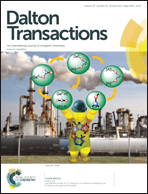A DFT study of the interaction between olefins and Cu2+ on silica and MCM-41 model surfaces†
Abstract
The interaction between ethylene and Cu2+ on a silica model surface was studied by density functional theory (DFT) with nine popular functionals. It is found that B3LYP with BSSE correction is the best method by comparing the calculated results with reported experimental data. This method was also used to study the interactions of Cu2+ with β-carotene, 1,3,5,7,9,11,13-tetradecaheptaene and ethylene on a MCM-41 model surface. The relationship between the reorganization energy of an olefin and its conjugation length was studied, and the roles of the electrostatic interaction between the olefin and the Cu2+ were investigated. It is also found that the different environments of Cu2+ affect the Cu2+–olefin interaction significantly.


 Please wait while we load your content...
Please wait while we load your content...